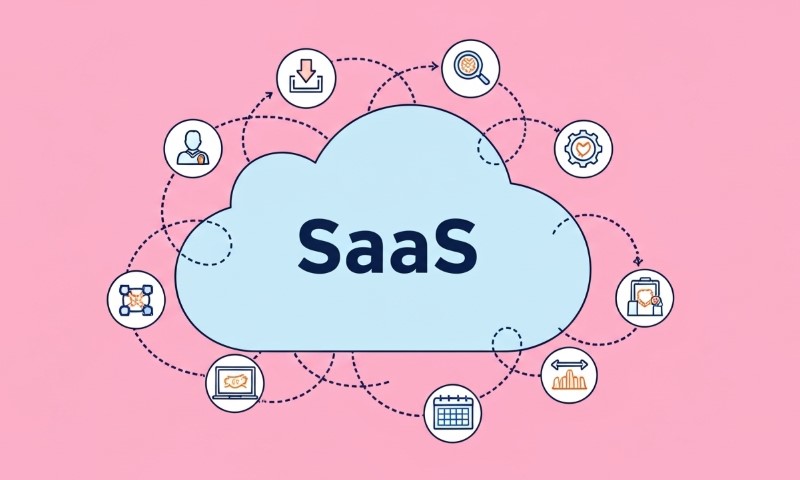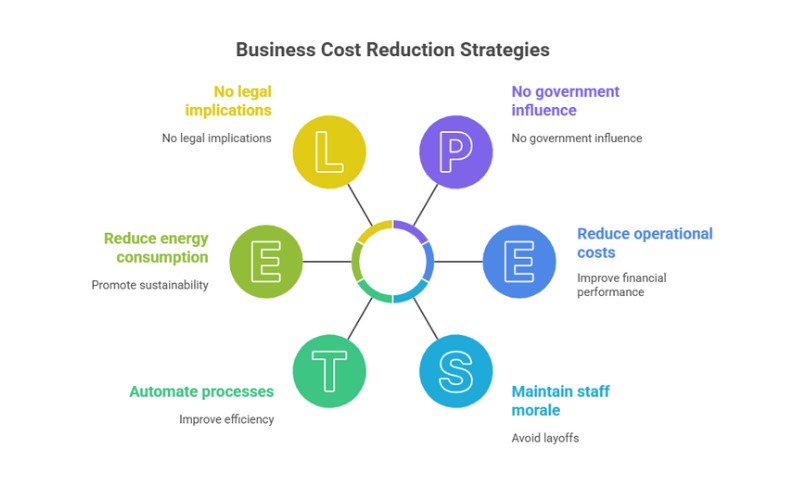Leaders everywhere face pressure to deliver more with less. Payroll protection matters, and so do the products and services you offer.
The good news: you can pull meaningful cost out of your business without layoffs or a slide in standards if you adopt a structured, evidence-based approach.
Here’s a comprehensive playbook blending proven cost levers, real benchmarks, and practical steps you can act on quickly.
Table of Contents
ToggleMindset Shift
First, rewrite how you think about cost. Avoid aiming for across-the-board reductions. Treat every dollar as an investment aligned to strategy and customer value, not just a number to trim.
By doing that, you protect what sets you apart while freeing cash from low-value activities.
Some companies work with advisory partners like Ned Capital Recruitment to align workforce planning with cost strategies that preserve capability and culture.
Research from high-authority sources urges leaders to link cost to capability and prioritize spending that supports core advantages, rather than trimming purely for effect. Many firms still miss savings targets when they chase numbers without a programmatic approach.
Here’s a simple, four-step framework you can run:
- Find: Build a single trusted view of spend, consumption, and utilization.
- Fix: Remove waste through targeted plays that do not reduce headcount or quality.
- Refit: Redesign processes and contracts so the savings stick.
- Fuel: Reinvest gains into efficiency engines like automation, energy upgrades, and skill building.
This sequence matches guidance from top consultancies and reduces the risk of short-termism that undermines quality or morale.
Quick Wins You Can Deliver in 90 Days
| Area | Action | Typical Savings | Time to Impact | Why It Works |
|---|---|---|---|---|
| SaaS and Cloud | Reclaim unused licences, right-size tiers, shut off idle resources | 10–30% of SaaS or cloud spend | 30–60 days | Enterprises waste millions on shelfware and over-provisioning. |
| Procurement | Triage top vendors, block off-policy buys, negotiate renewals early | 5–15% on targeted categories | 30–90 days | Early renewals and policy enforcement curb “maverick” spend and extract concessions without hurting quality. |
| Real Estate | Match space to actual utilisation, consolidate days, sublease excess | 10–20% of facilities costs | 60–90 days | Many portfolios remain oversized for today’s hybrid usage. |
| Energy | LED retrofits, HVAC tune-ups, controls and scheduling | 10–40% of lighting/HVAC energy | 30–90 days | Proven savings with rapid payback and minimal disruption. |
| Travel | Replace one-day flights with virtual, bundle in-person trips, tighten policy | 10–20% of travel budget | 30–60 days | Travel has rebounded – cost-performance trips work, day-runs don’t. |
1. Clean Up Software and Cloud Spend

Software and cloud costs often grow quietly until they become a major drain on margins. A focused cleanup of unused licenses, idle cloud resources, and overlapping tools can free significant cash without touching staff or service quality.
What to Do
- Build a catalog of all SaaS apps and cloud accounts; map owners, seats, actual usage, and renewal dates.
- Reclaim dormant seats; downgrade premium tiers where features aren’t used; block duplicate tools.
- In cloud, right-size instances, apply autoscaling, and schedule non-production shutdowns; adopt FinOps policy before any new workloads.
Why It Works
Many companies leave serious cash on the table. According to Zylo, the average enterprise has 51–53 percent of SaaS licenses unused in a typical month, and at scale that equals tens of millions annually. Managing cloud spend remains the number one challenge.
Quality Safeguard
Right sizing does not reduce capability. It aligns entitlements to real usage while preserving service levels.
2. Tame Procurement Leakages Without Squeezing Suppliers to Failure
Procurement can quietly drain profit if leakages go unchecked. The goal is not to pressure suppliers but to tighten controls, close renewal gaps, and restore discipline across spending channels.
What to Do
- Identify the top 30 suppliers by spend and the top 10 categories by tail leakage.
- Enforce channel discipline so teams buy only through negotiated agreements.
- Pull forward renewal negotiations 90–120 days before term to avoid auto-renew traps.
- Use AI-enabled contract lifecycle management (CLM) to extract terms, track alerts, and standardize KPIs.
Why It Works
Maverick spends erodes negotiated savings and compliance. Clear policy and tooling reduce leakage.
Automated renewal management alone can prevent costly roll-overs and unlock 5–15 percent reductions, as per Veridion.
Quality Safeguard
Focus on total value: service levels, quality metrics, and supply resilience must remain built into contracts.
3. Align Facilities to How People Actually Use Space

Office space is often one of the biggest hidden drains on the budget. By aligning facilities with real usage patterns, companies can cut costs, reduce waste, and create workplaces that genuinely support productivity.
What to Do
- Measure real utilization by day and zone.
- Consolidate anchor days to concentrate occupancy, then close underused wings or floors.
- Sublease surplus space or renegotiate leases at renewal; rationalize cleaning, security, and utilities accordingly.
Why It Works
According to JLL, global office utilization averages around 54 percent, still well below targets of ~79 percent.
Many portfolios are oversized for current hybrid patterns, so aligning space to usage cuts rent and operating costs without harming collaboration.
Quality Safeguard
Use experience-led design for the remaining space so the office continues to attract people rather than feel like a mandate.
4. Reduce Energy Costs Without Touching Headcount
Energy spending is one of the easiest areas to trim without affecting jobs or service quality. A few low-cost upgrades and smarter controls can lower bills fast while improving comfort and reliability.
What to Do
- Target lighting and HVAC first: install LEDs, occupancy sensors, smart controls.
- Commission HVAC, seal ducts, recalibrate set-points.
- Apply for utility rebates and consider performance-based financing models where vendors share savings.
- Track consumption weekly instead of quarterly.
Why It Works
Energy efficiency is a durable source of savings. According to WDBG, lighting and HVAC retrofit programs show 10–40 percent savings for lighting/HVAC; LED retrofits alone show 30–70 percent savings.
Quality Safeguard
Upgraded lighting and comfort settings often improve productivity and safety, not just cost.
5. Rethink Travel for Cost-Performance, Not Volume

Business travel costs have crept back up, but value hasn’t always followed. To control expenses without hurting relationships or performance, focus on purpose, not frequency. The goal is smarter travel: fewer trips, higher return.
What to Do
- Eliminate one-day flights entirely. Bundle multiple meetings into fewer, higher-yield trips.
- Default to virtual for internal status updates and training.
- Approve travel only when it advances revenue, retention, or critical delivery.
Why It Works
Business travel has rebounded in cost, yet companies are shifting to higher cost-performance trips. Eliminating lower-value travel keeps relationships and revenue flowing while reducing spend.
Quality Safeguard
Keep trips that deliver real value. Shift non-essential travel to virtual rather than summarily eliminating all travel.
6. Use Process Redesign and Automation to Take Out Waste
Redesigning processes and applying automation where it truly fits can strip away waste that drains resources.
What to Do
- Map end-to-end journeys in finance, HR, customer service, and operations.
- Eliminate rework, handoffs, and approvals that do not change outcomes.
- Apply automation where data is clean and rules are clear: invoice processing, reconciliations, and claims.
Why It Works
Research shows that large portions of back-office work are fully or mostly automatable. Some operations report up to 30 percent cost reduction over a few years when automation is scaled.
Quality Safeguard
Run pilots. Automate the stable, not the broken. Keep humans in the loop for exceptions.
7. Budget from Zero for Non-Critical Lines, Protect the Crown Jewels
Zero-based budgeting isn’t about wiping the slate clean; it’s about questioning every expense. By starting from zero on non-critical lines, you can expose legacy costs, protect strategic investments, and ensure every dollar still earns its place.
What to Do
- Conduct zero-based reviews for marketing, travel & entertainment, subscriptions, and third-party services.
- Challenge every line item to justify its existence, not just use last year’s baseline.
- Ring-fence spend that links tightly to core strategy and customer experience.
Why It Works
According to McKinsey & Company, zero-based budgeting often yields sustained savings of 10–25 percent in fixed and semi-fixed cost lines when supported by technology and culture.
Quality Safeguard
Use zero-based budgeting selectively to avoid hollowing out differentiators like R&D or customer support.
8. Strengthen Management Routines So Savings Do Not Leak Back
Strong management routines keep savings from disappearing over time. Without structure, cost gains fade quickly and inefficiency returns.
Clear governance, accountability, and transparent data turn short-term wins into lasting financial discipline.
What to Do
- Create a monthly cost council. Publish dashboards with variance, unit costs and utilization metrics.
- Tie functional bonuses to maintaining service levels while hitting cost targets.
- Freeze new tools or suppliers unless they replace something with equal or lower total cost of ownership.
Why It Works
Savings erode without governance, accountability, and transparent data. Many organizations miss targets when programs lack discipline.
Practical Playbook by Function

Finance
- Refresh unit economics: publish a simple cost model per product or customer segment.
- Improve working capital: speed collections with automated reminders, standard terms, and early-payment incentives.
- Use selective zero-based budgeting for travel, events, low-ROI sponsorships and non-critical external services; protect R&D and customer-facing support.
IT & Data
- Rationalize SaaS: consolidate overlapping tools; reclaim or downgrade licenses monthly.
- Deploy cloud FinOps: tagging, budgets, rightsizing, and schedules for non-prod workloads.
- Build automation pipeline: prioritize high-volume, rules-based tasks with clean data.
Operations
- Run lean sprints: reduce rework and scrap; rebalance lines to takt time.
- Move to condition-based maintenance to avoid over-servicing.
- Energy: implement low-cost controls first; plan capex upgrades with rebates and financing.
Workplace & Facilities
- Footprint based on measured utilization: size space to actual usage and experience goals.
- Smart scheduling: consolidate office days; close zones to cut utilities and services.
- Retrofits: invest in LEDs and HVAC commissioning for fast payback.
Procurement & Legal
- Contract calendar: early renewals (120 days), renegotiate uplifts, harmonize terms.
- Preferred catalogs: block off-policy purchases for covered categories.
- CLM with AI: automate term extraction and alerts to stop silent auto-renewals.
Sales & Customer Success
- Travel ROI: require a value statement for trips; default to virtual for non-revenue meetings.
- Tool stack: rationalize enablement tools by actual seller outcomes, not feature lists.
How to Protect People Through the Transition

Transparency matters. Communicate to teams openly that the focus is on cutting waste, not jobs. Research shows layoffs carry hidden costs: morale drops, innovation suffers, and customer service quality slips. Payroll protection signals respect for people and future growth.
Skill uplift is a key reinvestment. Use part of the savings to train for automation, data literacy, and continuous improvement. That way, your people move up the value chain rather than out the door. Productivity research correlates skill investment with sustainable margin gains.
Metrics That Prove You Are Saving Without Hurting Quality
You must track cost and service metrics side by side, week by week.
Cost Metrics (Examples)
- Run-rate savings by category
- Cloud cost per workload
- SaaS cost per active user
- Energy cost per square meter
- Travel cost per booked revenue dollar
Quality/Output Metrics (Examples)
- First-pass yield
- Cycle time
- On-time delivery rate
- Customer NPS or CSAT
- SLA adherence rate
- Rework rate
Productivity Metrics
- Output per labor hour
- Unit labor cost trends
A 12-Week Blueprint
Here’s where all the tactics connect. The 12-week blueprint turns cost optimization from theory into an actionable plan with measurable outcomes.
Weeks 1–2: Baseline and Controls
- Freeze net-new software and vendor contracts unless they replace something with equal or lower total cost.
- Export the full list of SaaS and cloud resources with owners, seats, usage, and renewal dates.
- Stand up a cost council and create a simple dashboard.
Weeks 3–6: Execute Quick Wins
- Reclaim and right-size software licenses.
- Implement cloud rightsizing and schedule non-prod shutdowns.
- Launch LED and controls in the largest sites; commission HVAC; set occupancy schedules.
- Tighten travel policy; replace one-day flights with virtual.
Weeks 7–9: Procurement and Process
- Pull forward top renewals; renegotiate terms and payment schedules.
- Close tail suppliers in overlapping categories.
- Run two lean sprints in operations or service.
- Start an automation pilot in finance or claims.
Weeks 10–12: Lock In and Reinvest
- Update CLM with alerts; publish preventive renewal calendar.
- Adjust floor plans based on measured utilization; sublease or reduce services in unused zones.
- Announce targeted training funded by savings; publish before-and-after metrics.
Common Pitfalls to Avoid
- Uniform cuts that weaken R&D, customer care, or safety. Tie reductions to strategy so you do not damage your competitive edge.
- Missing renewals. Auto-renewal clauses can erase any hard-won savings. Use CLM alerts diligently.
- One-and-done programs. Without governance, savings creep back. Many organizations fail because they lack sustained discipline.
- Cutting travel indiscriminately. Maintain the trips that protect revenue and relationships. Shift others to virtual models.
Bottom Line
It is possible to remove sizable costs without reducing headcount or lowering quality. Start with non-controversial waste in software, cloud, facilities, energy, travel, and procurement.
Redesign your processes and contracts so savings stick. Reinforce culture with simple routines and visible metrics. Reinvest a slice of savings into skills and automation so your people deliver more value per hour, not fewer hours.
Related Posts:
- How To Build A Successful Online Course Business…
- Best AI DeepFake Porn Generators - Customizable and…
- Is Gambling Without Money Ethical? Debating the…
- 8 Best Ways to Promote a Brand Without Spending Much
- Katt Williams Net Worth in 2024 - Top 7 Investments…
- From Startups to Giants - How Technology Is Driving…

















